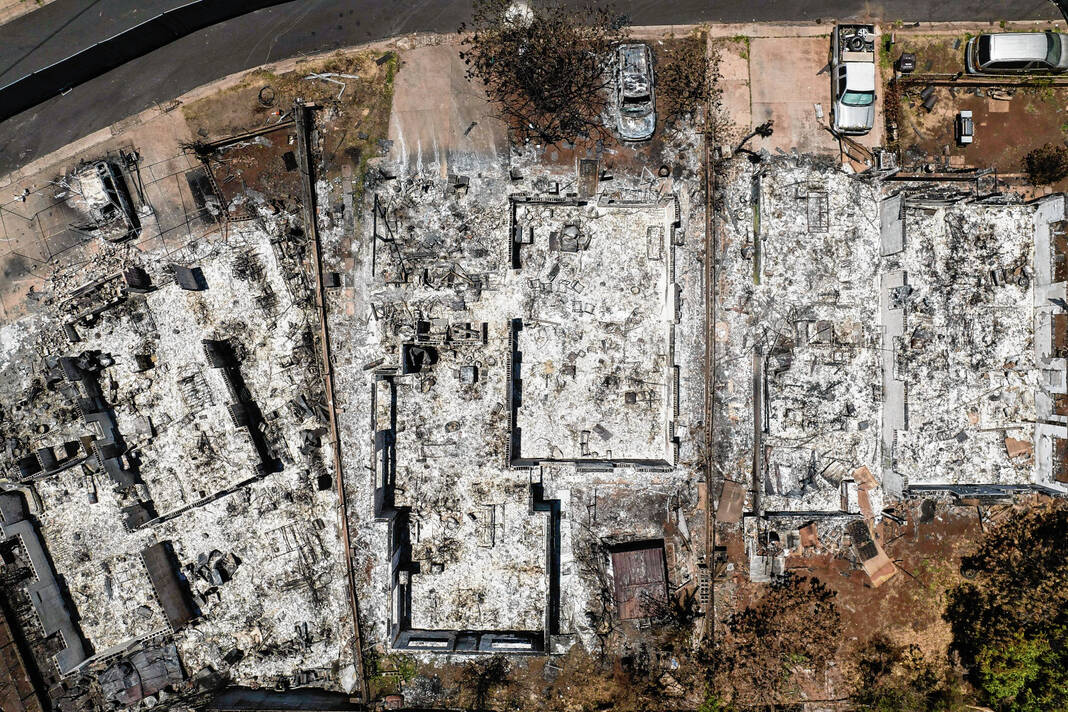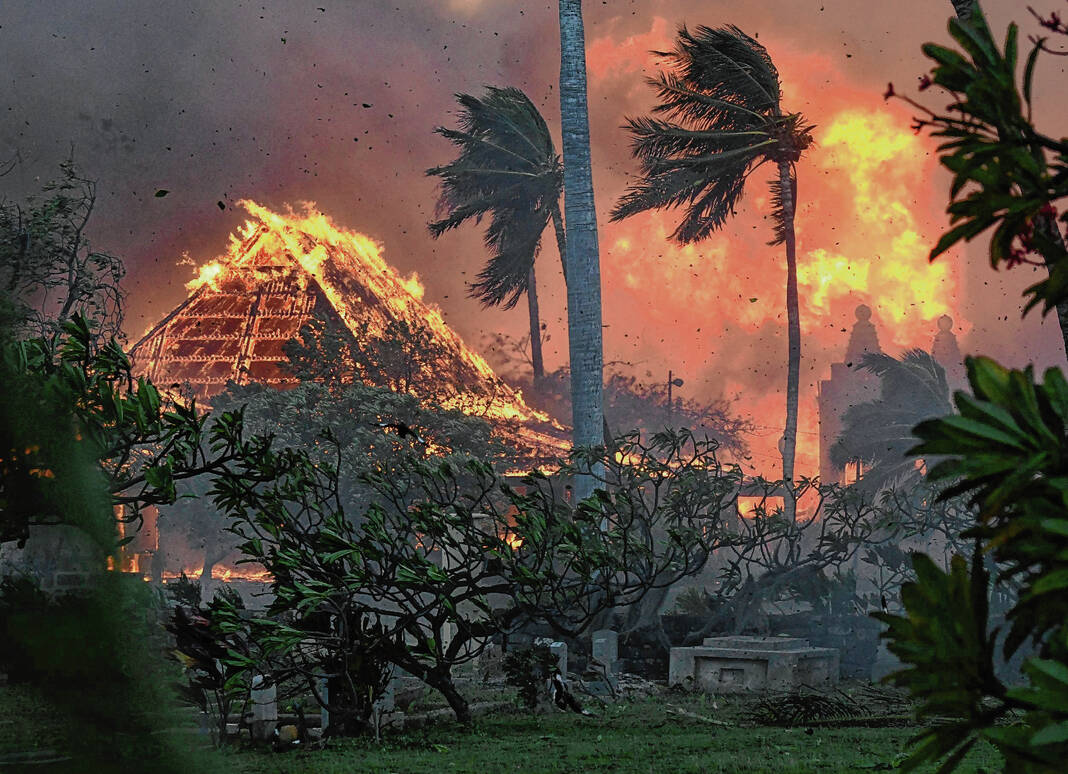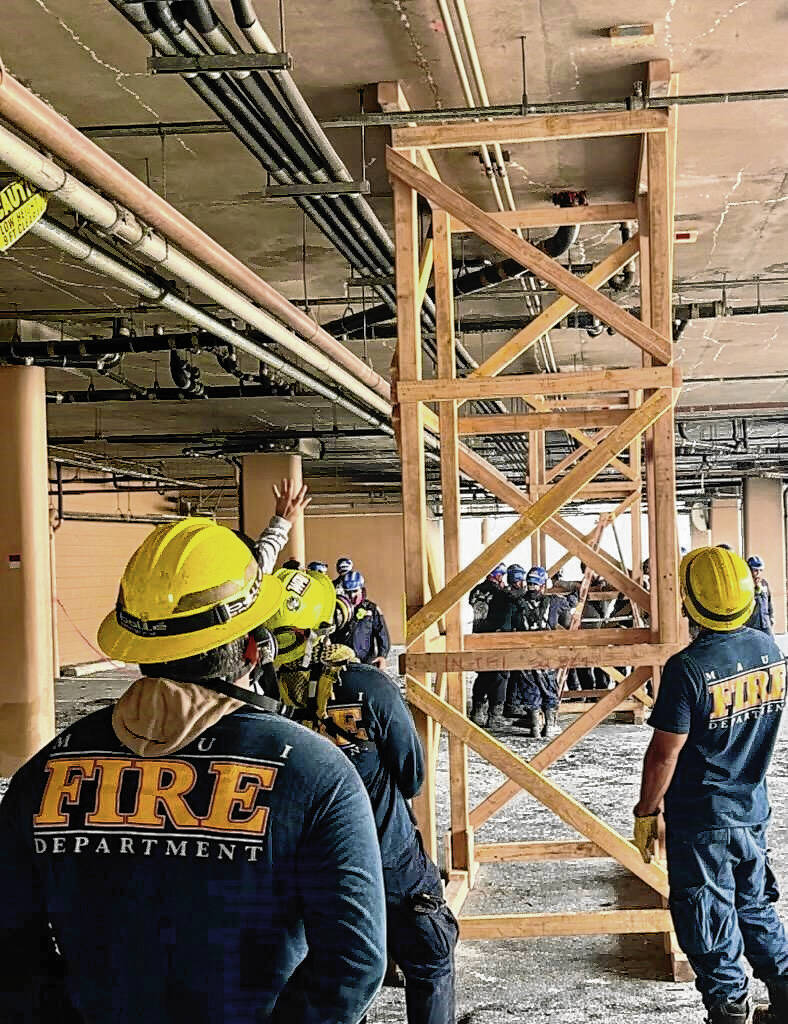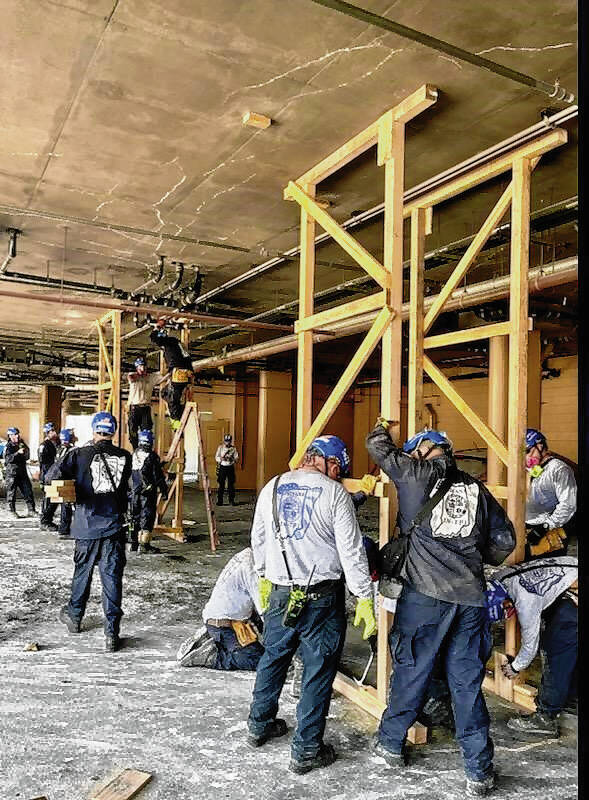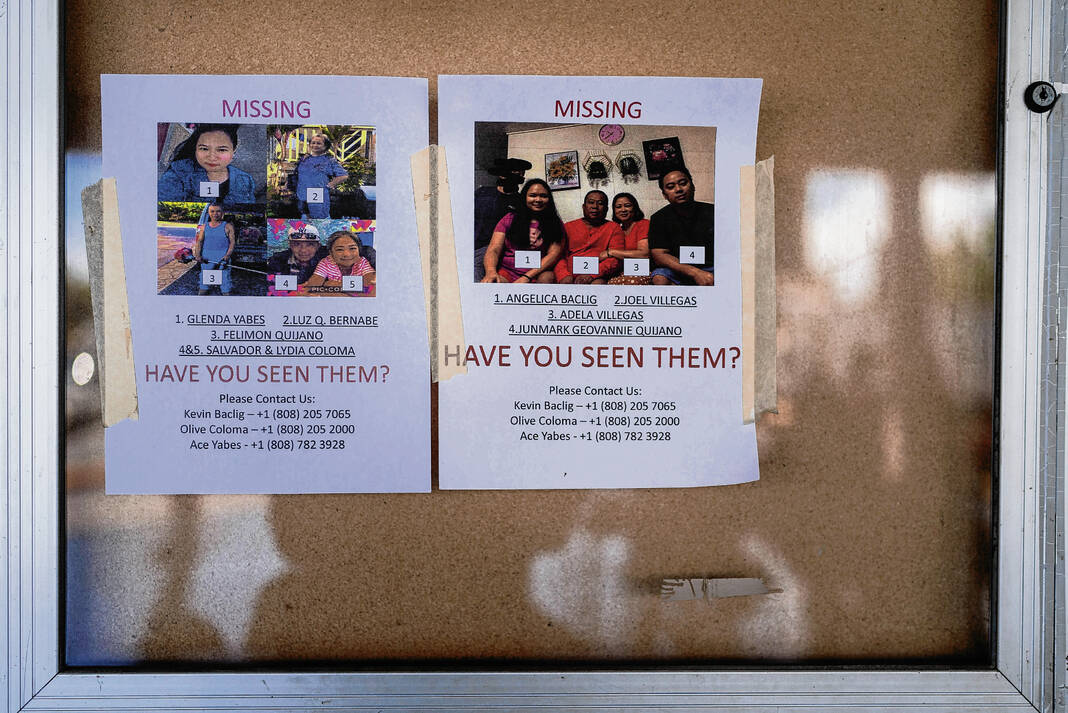The devastation is unfathomable.
Block by block, what were once buildings and homes are now rubble in Lahaina, Hawaii. Some exterior walls remain, but they are charred black from the fast-moving wildfires and smoke. Inside, what were once possessions are now ashes. The metal frames of cars sit abandoned and ash-covered on streets.
Three Johnson County first responders are seeing the devastation of deadly Hawaiian wildfires first-hand as part of Indiana Task Force 1. Seventy members of the task force were deployed to the island of Maui as a Type 1 Urban Search and Rescue team last week, including Bargersville Fire Deputy Chief Mike Pruitt, Greenwood Fire Lt. Justin Laraway and White River Township Engineer Paramedic Mike Combs.
Earlier this month, wildfires carved paths of destruction on the island of Maui, with an Aug. 8 fire destroying the historic seaside community of Lahaina. More than 2,000 structures were damaged or destroyed by the wildfires. At least 115 are confirmed dead, with well over a thousand still unaccounted for.
About 341 personnel are assisting with search efforts, including 50 K9s from various states that specialize in finding human remains, and first responder teams from Indiana, California, Maryland, Nevada and Washington, said Mike Pruitt, Bargersville Fire deputy chief and one of the task force’s public information officers.
Indiana Task Force 1 first arrived in Hawaii on Aug. 25, with their first assignment being to search what was a 5-story apartment building in Lahaina. The building had nearly burnt to the ground during the wildfires, and the task force’s job was to go through it meticulously to find any evidence of people who may have been in the building, Pruitt said.
So far, they haven’t located anyone though K9s that specialize in finding human remains have alerted at times. What the task force has seen is evidence of a fire so intense, there’s very little left of anything, he said.
“Typically, you go into a building that’s been on fire, you’ll find personal belongings of some sort,” he said. “Literally, there’s nothing left. It’s all ash and rubble from the building itself.”
When the wildfires came through the city, they were moving at 70 to 80 miles an hour with temperatures possibly up to 2,300 degrees. It’s hard to find someone in this type of heat, so it requires detailed work by searchers, said Lt. Justin Laraway of the Greenwood Fire Department.
“We’re even trying to determine things in ashes,” Laraway said. “It’s something you’ve got to sit in the back of the head and just keep moving forward.”
“You’re here for a purpose and more for closure for families in the community. This is where our expertise plays in. This is what we’re trained to do, and we’re pretty good at it,” he added.
The task force has had experience doing searches in collapsed buildings. In 2021, the task force was one of several that deployed to Miami, Florida for search efforts following the Surfside Condos collapse, said Laraway, who has been part of the task force since 2014.
On Wednesday, the task force was preparing to be reassigned to other search areas. Searches are now focused on multi-story residential and commercial properties, Maui County officials said in an update earlier this week.
Damaged areas of Lahaina have been kept locked down for search efforts, with only the task forces, local police and fire agencies, along with government agencies on all levels, allowed in. Soon though, Pruitt expects locals to be allowed into these areas, he said.
As efforts begin to shift, the search for those who are missing and unaccounted for continues. Some 1,000 to 1,100 names remain on the FBI’s tentative, unconfirmed list of people unaccounted for after wildfires.
The number of unaccounted and missing people is pretty shocking, said Pruitt, who has deployed to disaster areas with Task Force 1 for nearly two decades.
“Once you get here and you see what they were faced with, you could understand how it could happen,” Pruitt said. “It’s just to think that that many people potentially disappeared in this community with this fire, it’s just mind-boggling to think that that happened. I can’t imagine what they were going through.”
Task Force 1 members have heard first-hand what survivors have gone through. Pruitt was told a story about a Maui fire engine being overrun by the wildfires, and as this was happening a firefighter had a medical emergency that they had to render medical aid to while also trying to save themselves, he said.
Their fire engine is now sitting on the street, completely burnt out.
“Just hearing stories like that from the firefighters on what they faced is just unbelievable,” he said.
Locals have been welcoming and cooperative with the task force’s mission, Pruitt said. The task force has also been working hand-in-hand with Maui firefighters, including to help stabilize a damaged building they needed to search.
Laraway has also met with people who, while they haven’t lost their homes, have been worried about the loss of their livelihoods. Task force members have been staying at hotels and buying food and snacks to help keep people afloat during their deployment. They also put a tip jar on a buffet line at their hotel to give employees extra funds, he said.
The scenes of devastation are hard for Pruitt to wrap his head around. Seeing photos and videos of the damage on the news does not compare to seeing it in person, he said.
“You go two miles in either direction from Lahaina, and you would never know anything happened. It’s scenic, everything’s beautiful,” Pruitt said. “Then you get right here in Lahaina … it just changes like 180 degrees on what you see.”
Pruitt has responded to fires in Indiana that were devastating, but what happened in Lahaina is on a whole other level. To put it in perspective, he said it would be like if half of the city of Franklin burned to the ground.
“I couldn’t even fathom this happening somewhere back home. … 80% of the town’s homes and businesses were damaged in some form,” he said.
Laraway and Pruitt were both surprised to see the way the wildfires moved. In some places, entire subdivisions and multiple blocks were completely torched by the wildfires, but in others homes in between damaged areas were untouched.
“For the fire to jump over and go around them, it’s absolutely amazing. It makes the fire behavior you’re taught go out the window because it doesn’t make any sense,” Pruitt said.
The recovery process will take years. But everyone is working to help them get back on their feet as soon as possible, Pruitt said.
“They have a big recovery process, but the cooperation between all the different agencies has been awesome,” he said. “Everybody’s had one mission in mind to get get people accounted for, and help these people get back on their feet as soon as possible.”
Task Force 1 to be in Hawaii has not yet received a demobilization order, and will likely be deployed for several more days. As time goes on, some teams will get demobilized and they will eventually turn over operations to locals, Pruitt said.
— The Associated Press contributed to this report.
The following interactive graphic from the Associated Press tracks the origins and progression of the deadly wildfires that ravaged Maui in early August:


